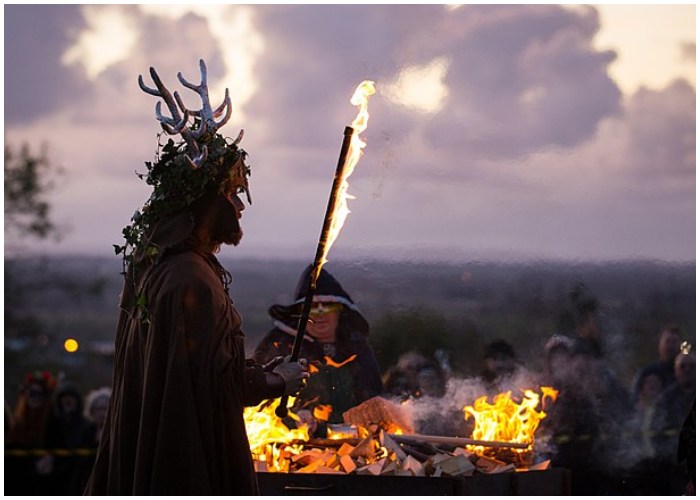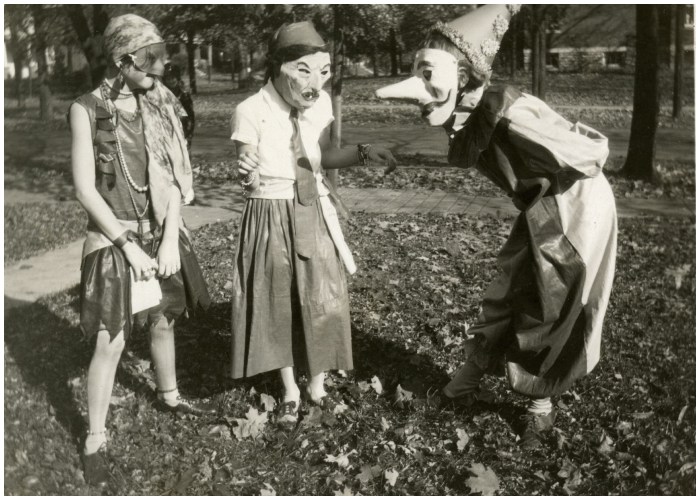Halloween as we know it today has deep historical roots, tracing back over 2,000 years to the Celtic festival of Samhain. For the Celts, who lived in what is now Ireland, the United Kingdom, and northern France, Samhain marked the end of the harvest season and the start of the dark winter months—a time they associated with death and the return of spirits. Over the centuries, Halloween has evolved, influenced by Roman, Christian, and American customs to become the festive, family-friendly event it is today. Let’s explore Halloween’s fascinating journey from ancient rituals to a holiday celebrated worldwide.
Samhain: Halloween’s Ancient Celtic Beginnings
The origins of Halloween trace back to Samhain, the ancient Celtic festival that marked the beginning of winter on November 1. Celts believed that on the night before their new year, October 31, the boundary between the living and the dead was blurred, allowing spirits to return to Earth. This spiritual overlap was both feared and revered, as the Celts believed spirits could cause mischief, like damaging crops, while also allowing Druids, or Celtic priests, to predict the future. To honor their deities and protect their communities, Druids would light large bonfires, and villagers wore animal skins and heads as costumes. These gatherings involved sacrifices, fortune-telling, and re-igniting hearth fires from the sacred flames for protection during the cold months. Samhain’s customs laid the foundation for the Halloween traditions we recognize today.

Roman and Christian Influences
After the Romans conquered Celtic territories in 43 A.D., they brought their own traditions to the mix, which further shaped Halloween. The Romans introduced Feralia, a late October festival to honor the dead, and a second festival for Pomona, the goddess of fruits and trees. Pomona’s symbol, the apple, is likely the origin of apple-bobbing games still popular on Halloween. Centuries later, as Christianity spread, Pope Boniface IV designated November 1 as All Saints’ Day, or All-hallows, and November 2 as All Souls’ Day, encouraging believers to honor saints and deceased loved ones. This shift allowed Samhain’s traditions to blend with the new Christian observances, making October 31 “All-Hallows Eve.” Halloween was thus transformed from a purely pagan festival into one that incorporated both sacred and secular elements, creating a more universal celebration that continues to evolve.
Halloween in America
In the United States, Halloween celebrations were initially limited, especially in Puritan New England, due to religious beliefs. However, the holiday became more widely celebrated in Maryland and the southern colonies, where customs from European immigrants and Native American traditions merged. Early American Halloween featured harvest festivals, “play parties” with fortune-telling, dancing, and ghost stories. As Irish immigrants arrived during the 19th-century Potato Famine, they popularized Halloween further, bringing their customs of costumes, pranks, and community festivities. By the late 1800s, there was a movement to transform Halloween into a community-centered holiday, emphasizing parties and family-friendly activities. Newspapers encouraged families to replace “grotesque” elements with cheerful decorations, games, and costumes. This push reshaped Halloween into a secular, community-focused celebration, which evolved into the widespread and joyful event we recognize today.

The Rise of Trick-or-Treating
By the early 20th century, Halloween parties for children and adults had become common, with traditions like dressing up, games, and seasonal foods. Trick-or-treating, however, didn’t become popular in the U.S. until the mid-20th century, when children would go door-to-door asking for treats instead of money or food, which had been customary in earlier European traditions. Today, Halloween includes a mix of spooky decorations, haunted houses, costumes, and themed events, drawing on its origins in Celtic, Roman, and Christian festivals. Now, Halloween is celebrated globally, with variations unique to each culture, whether it’s honoring ancestors, parading in costumes, or gathering with family. The holiday has come a long way, yet the spirit of community, creativity, and a touch of the supernatural remains at its core.